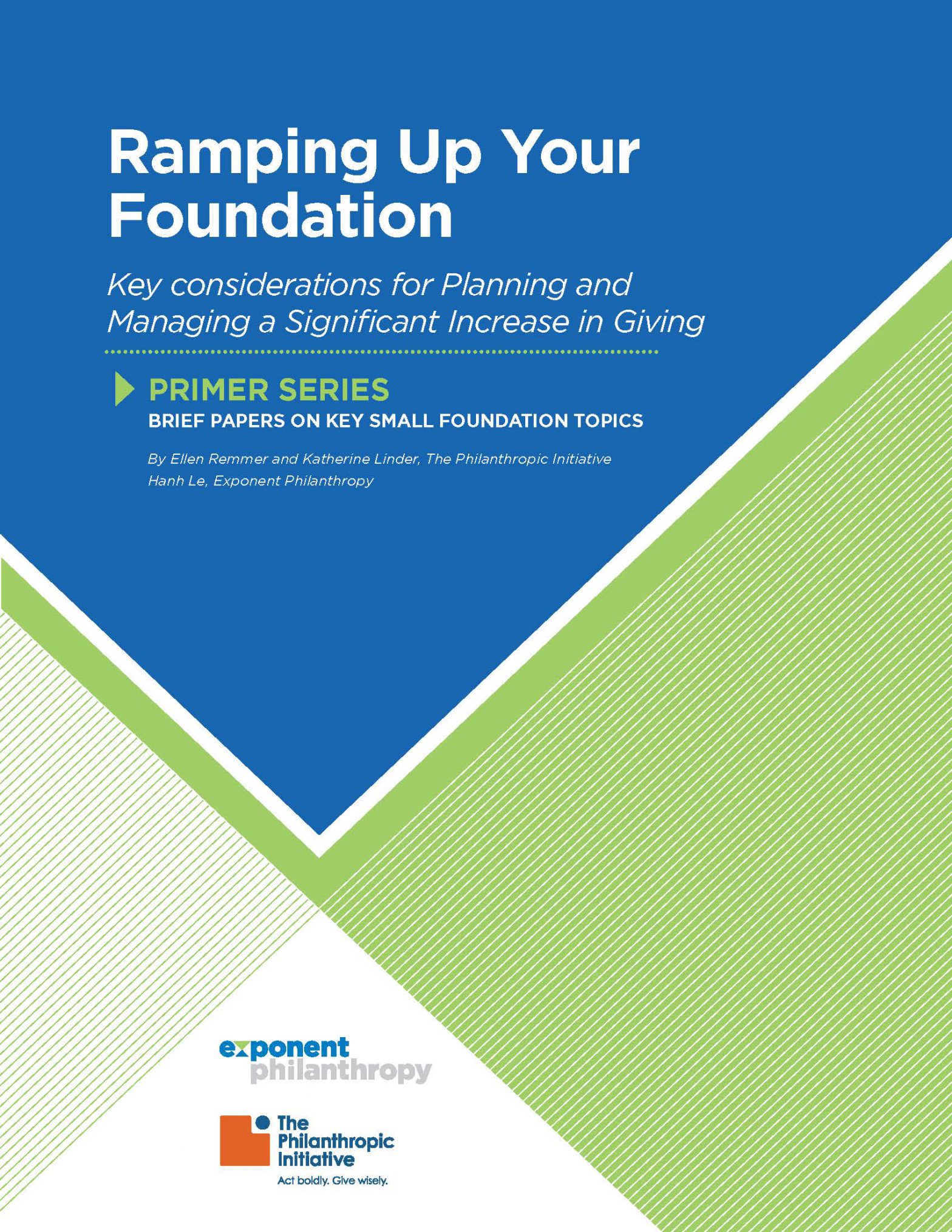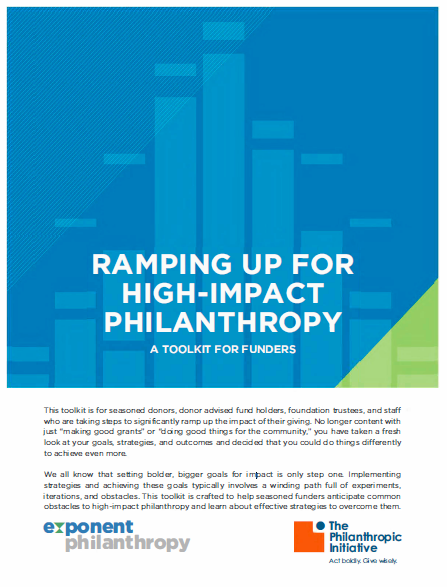
Over the last few years, TPI has found itself working with more and more foundations undergoing a substantial growth in assets. Whether the influx is sudden or carefully planned, whether the scale is modest or enormous, all the people running these foundations find themselves facing a number of important challenges as they transition to the next level. And they ask us, “Where’s the guidebook for doing this well?”
Exponent Philanthropy, the largest grantmaking membership organization in the world, noticed the same phenomenon, as well as the lack of a helpful holistic guide. So our two organizations decided to collaborate on the development of such a guide. Just released, Ramping Up Your Foundation: Key Considerations for Planning and Managing a Significant Increase in Giving draws on our two organizations’ extensive experience with TPI clients and Exponent Philanthropy members, as well as on findings from interviews with eight foundations that have faced the prospect of ramping up. It lifts up key considerations for ramping up in the areas of planning, governance, administration, grantmaking, investments, and tax and legal issues.
Over the coming weeks and months, we look forward to sharing a number of observations on specific sections of the guide and to exploring how the guide might best be used.
But first, we want to tell you about some of the biggest surprises emerging from the targeted research we conducted with foundations that have experienced a ramp up.
1. Nuts and bolts – Our interviewees focused first and foremost on the importance of getting the basics down in a time of growth. Whether that meant the first hire was a top-notch, super-organized administrator, or that the first year was dedicated primarily to streamlining or establishing systems or procedures, most interviewees stressed the need to focus on nuts and bolts administration before moving to the more glamorous area of grantmaking. Several noted that anticipation in the grantee community can be high during this period, with many people expecting a rapid development of new initiatives and strategic directions. Letting your grantee community know that the foundation is focused initially on setting up/resizing its infrastructure is important.
2. Donor intent – Another somewhat surprising lesson shared by foundation leaders was the major focus on taking time in the early stages to ensure that everyone has a shared understanding of donor intent. This can be important because the foundation needs to take care of some legacy grantees and/or the board is undertaking a strategic planning process. Foundations with the luxury of planning for ramping up are strongly advised to invest in interviewing the donor(s) and documenting their desires.
3. Change is hard – The final surprising observation was the emphasis paid to the challenges of change for both board and staff. A growth in assets will often precipitate the hiring of the first professional staff or an expansion of staff to those who may not have known the donor(s) or been part of a small, intimate operation. Board members may need to learn to “let go” of operational details and/or to work with new board members. Figuring out what continues, what is improved, and what must be left behind is a key task in any transition, especially this one.
If your foundation is planning to grow, the Ramping Up Your Foundation guide will help you explore many of the areas that will be affected and learn about the resources and next steps that will help you transition to a higher level of impact.
Click here to download the guide through Exponent Philanthropy’s website.
—
TPI has worked with a number of foundations at various points in the ramping up process, helping these organizations successfully navigate the challenges that come with this transition. To learn more about our client work in this area, or if you are interested in engaging TPI’s consulting practice, please contact Jennifer Montone at jmontone@tpi.org.


